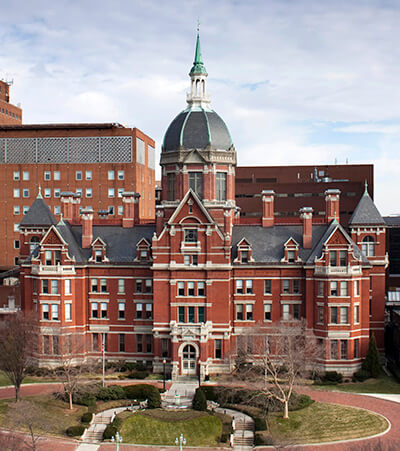Role of The Johns Hopkins Hospital

As medical records show, Mrs. Lacks came to Johns Hopkins Hospital to undergo radium treatments for her cervical cancer. This was the best medical treatment available at the time for this terrible disease. At the time that Henrietta was a patient, Johns Hopkins was one of the few leading hospitals that served African-Americans — as was stipulated by Mr. Johns Hopkins, founder of the university and hospital, in his will.
During her stay at The Johns Hopkins Hospital, a sample of Mrs. Lacks’ cancer cells retrieved during a biopsy were sent to Dr. George Gey's nearby tissue lab. For years, Dr. Gey, a prominent cancer and virus researcher, had been collecting cells from all patients – regardless of their race or socioeconomic status – who came to The Johns Hopkins Hospital with cervical cancer, but each sample quickly died in Dr. Gey’s lab. What Dr. Gey would soon discover was that Mrs. Lacks’ cells were unlike any of the others he had ever seen: where other cells would die, Mrs. Lacks' cells doubled every 20 to 24 hours.
Today, these incredible cells are used to study the effects of toxins, drugs, hormones and viruses on the growth of cancer cells without experimenting on humans. Although these were the first cells that could be easily shared and multiplied in a lab setting, Johns Hopkins has never sold or profited from the discovery or distribution of HeLa cells and does not own the rights to the HeLa cell line. Rather, Johns Hopkins offered HeLa cells freely and widely for scientific research.
Today, Johns Hopkins focuses intensely on providing the best care to every patient and upholding the highest standards of medical ethics. We have a special commitment to Baltimore City, with a long history of working to improve the health and well-being of our community.
